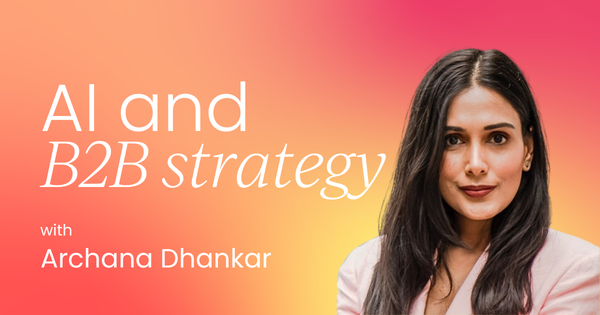Note: This article comes from Archana's episode on CMO Convo.
The conversation around AI in marketing has shifted dramatically.
We've moved beyond simple automation and predictive analytics to embrace generative AI and agentic AI capabilities. These technologies are changing how we approach everything from customer research to content creation.
But what does the future of AI in marketing truly look like?
In this article, I want to unpack the different ways AI is weaving itself into our go-to-market strategies.
We'll move beyond the surface-level applications of generative AI to explore its potential in strategic marketing functions like customer research and persona development. We'll also discuss how to prepare your team for this change and what skills will be most critical for marketers to succeed.
The evolution of AI in marketing
My journey with artificial intelligence began during my computer engineering studies, where I worked on projects involving neural networks.
The AI landscape has transformed dramatically since then. For the past 10-15 years, we've had automation, predictive analytics, and prescriptive analytics as standard marketing tools.
What's different now and what’s really changing the game is something called "agentic AI". This is a combination of generative AI and the automation that has already existed. It's where we'll see significant gains in efficiency and a restructuring of marketing organizations to function better.
AI as an enabler across the marketing spectrum
Many marketers view AI primarily as a tool for operational tasks like content creation, creative development, and similar activities.
However, in my experience, AI works best for derivative assets, not core ones.
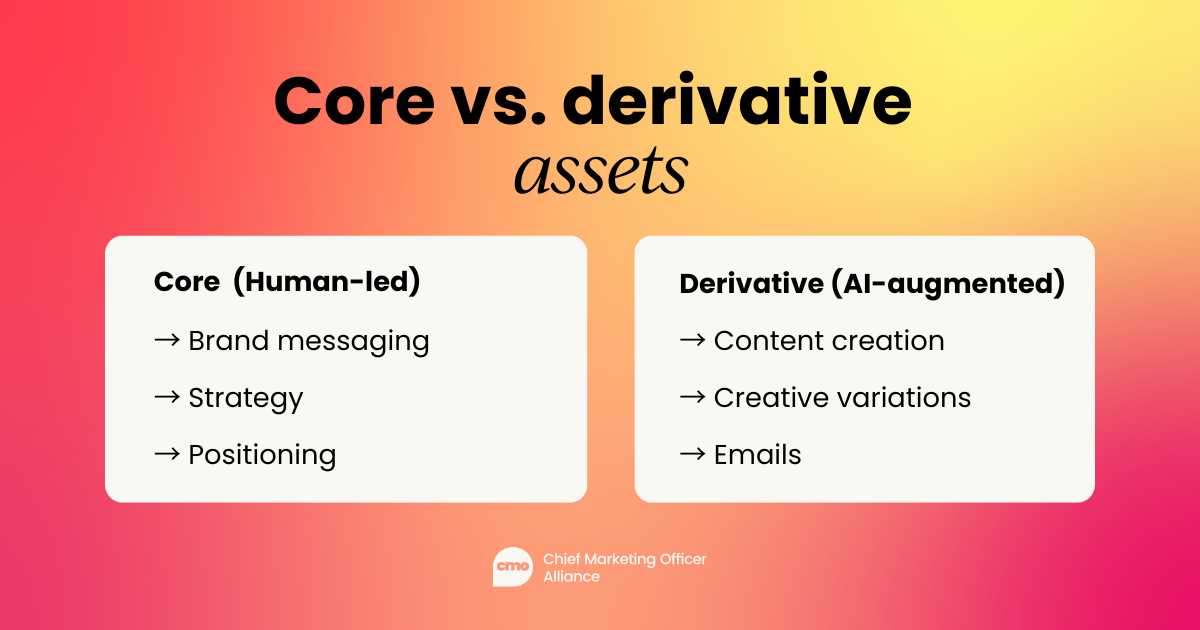
Meaning, core assets should still come from a human. Relying on AI alone can make the content feel inauthentic or misaligned with the brand's message.
Thinking of AI solely for content creation is really just scratching the surface.
The core messaging and strategic assets still require human insight and creativity. AI tools work best when augmenting human expertise rather than replacing it. An AI-generated core asset often lacks authenticity and may miss the mark on conveying the right message to your audience.
The real transformation lies in applying AI to strategic marketing functions. Customer personas, market research, and ideal customer profile (ICP) development have traditionally been resource-intensive activities that many organizations skip due to bandwidth constraints.
The strategic power of AI
The strategic application of AI in marketing represents the most significant opportunity for the next three to five years. Traditional customer research is expensive, time-consuming, and often gets deprioritized due to resource constraints.
This is where AI's true value emerges.
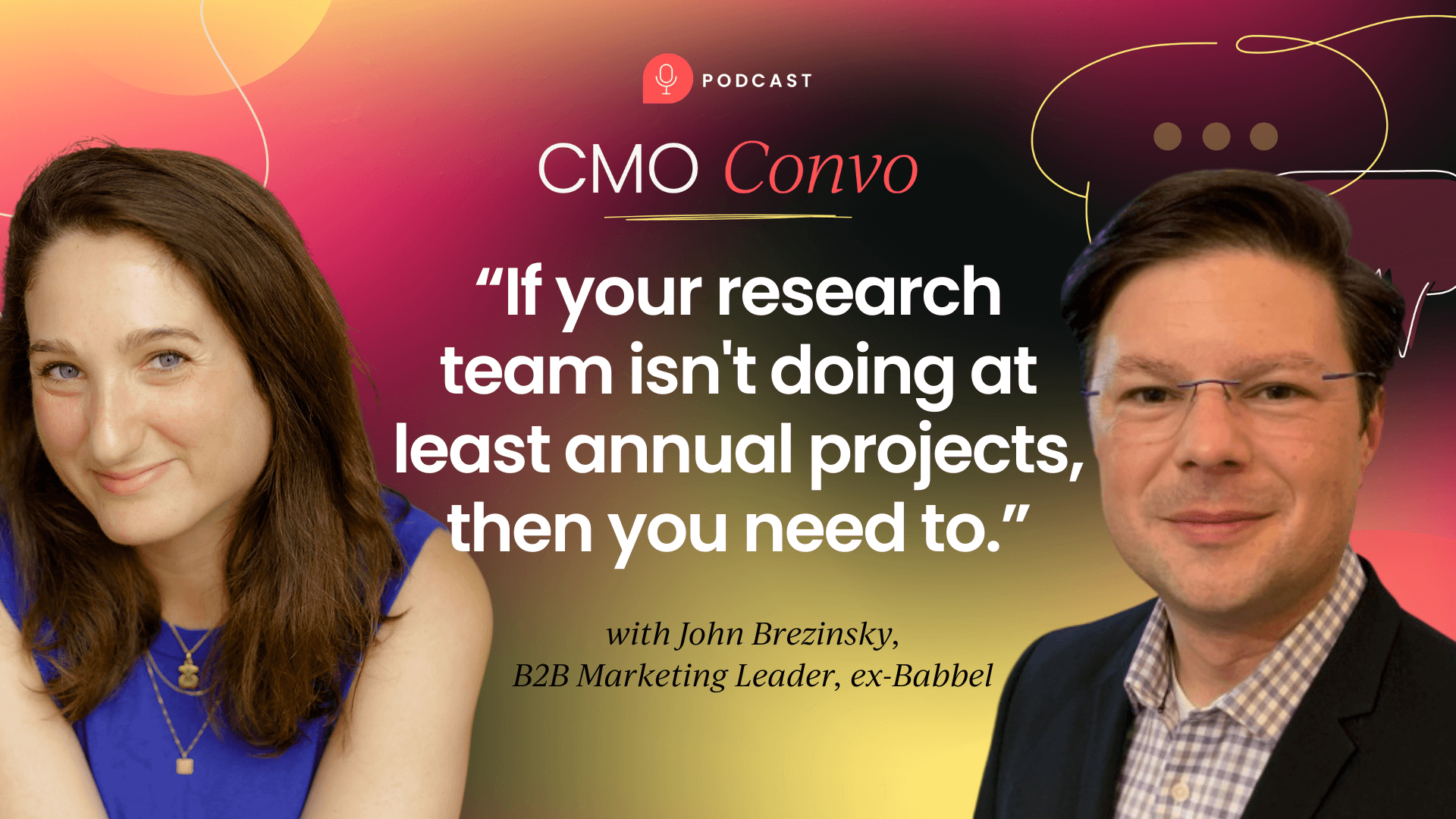
By creating cluster ICPs that evolve based on behavioral data, engagement patterns, industry trends, and demographic information, we can build self-learning models that continuously improve our understanding of customers.
Several tools already offer these capabilities, but the key lies in training them on your organization's specific data: your sales pipeline, customer behaviors, and unique market position.
This customization transforms generic AI capabilities into powerful, organization-specific insights.
Here are two areas where I’ve noticed AI’s impact.
A new approach to Product Marketing
Product marketing is one area that can benefit immensely from AI.
Too often, product teams become insulated, focusing on features they believe are important while losing touch with actual customer needs.
But product marketers are constantly talking to customers and gathering industry insights. This can be a very manual process, however. So by leveraging AI, you can analyze a wealth of unstructured data.
Imagine training a model on call transcripts from your sales team and customer success chats. This gives you a continuous stream of knowledge about what customers actually need without the resource burden of scheduling interviews or conducting surveys.
By training large language models (LLMs) on your company's interaction data, you can query them for insights: "Based on all this data, what are the top 10 challenges our customers face?" This approach shifts product messaging from feature-focused to problem-focused, emphasizing why customers should care about your solutions.
Automating marketing operations
Another significant area for AI is marketing operations.
In B2B, clean data has always been a challenge. Data can be incomplete, messy, or require massive cleanup projects every few years.
AI can automate these tasks, ensuring that the data we use is purpose-built and reliable.
Building your organization's AI foundation
Creating a company-specific AI capability involves more than just adopting generic tools.
Whether through custom GPTs, retrieval-augmented generation (RAG) models, or platforms like Gong, the goal is transforming unstructured information into actionable insights.
The focus should be on leveraging your unique value proposition, market positioning, and accumulated knowledge to create AI systems that understand and amplify your specific strengths.
Preparing your team for AI adoption
The signals that an organization is ready for AI adoption vary.
A mature organization needs to have a solid foundation: clean data, a robust martech stack, and a clear understanding of their pain points. The most critical factor is having a team with a mindset for change. You need to take people on this journey with you.
For a startup, it's often easier. They're starting with new tools and processes, making them more "AI-native" from the ground up. It’s not surprising to see a small, four-person startup leveraging AI to scale to millions in revenue.
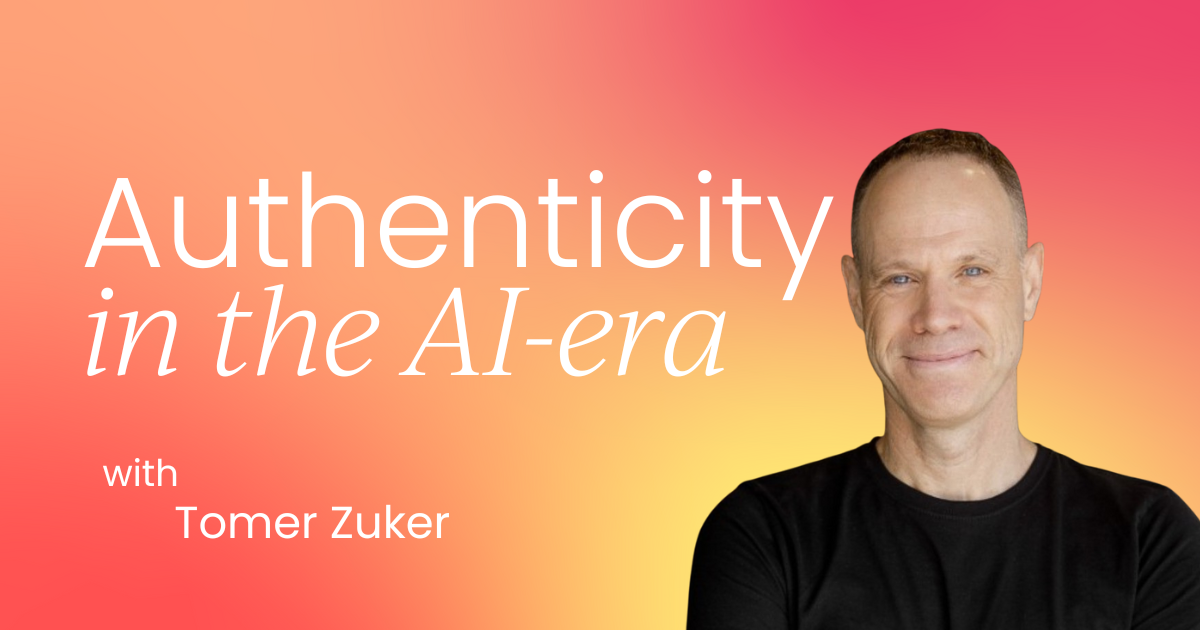
Creating alignment for AI success
I've seen many projects fail when teams work in a silo without involving all stakeholders.
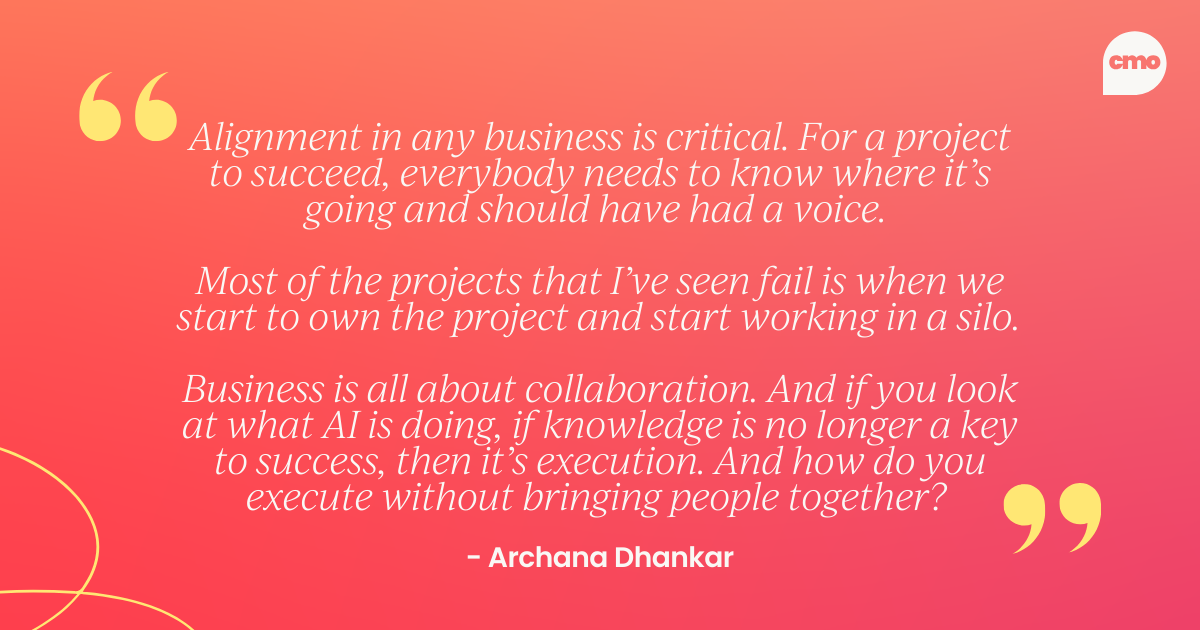
And successful AI adoption requires alignment across product marketing, brand teams, business strategy, revenue operations, and sales.
Business success depends on collaboration, and AI amplifies this need. If knowledge becomes commoditized through AI, execution becomes the key differentiator. Strong execution requires bringing people together around shared goals and understanding.
Here's how to create the right alignment:
- Give everyone a voice. Make sure stakeholders from teams like product marketing, sales, and RevOps understand where the project is going and have a say in identifying key use cases.
- Identify impactful use cases. Focus on projects that solve an existing bottleneck or can have a significant business impact. Prioritize based on a time-versus-effort analysis to find the biggest gains.
- Start small and iterate. For larger projects that might take six to nine months, use a crawl-walk-run approach. Start with smaller, iterative pilots to prove the concept and show quick wins while you work on the larger change management piece.
I recommend creating a visual framework plotting time versus effort against potential gains. This helps prioritize high-impact projects while also identifying quick wins that can build momentum and demonstrate value.
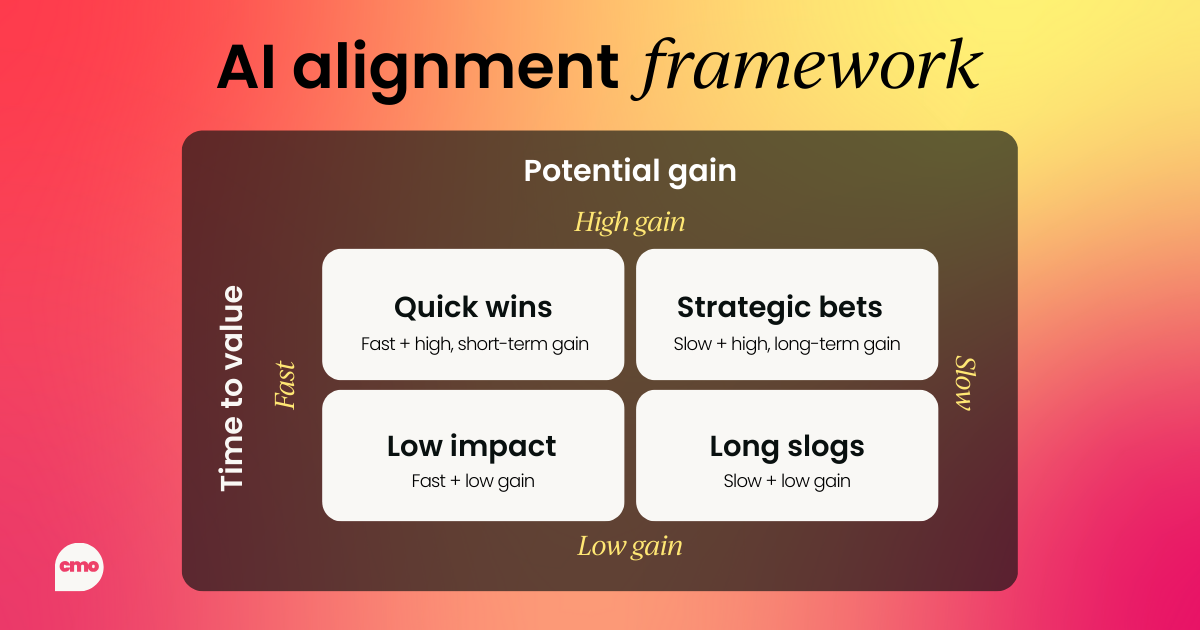
Implementing AI: A “crawl, walk, run” approach
A great model for managing change is to start with small pilots and create core groups.
As in, organizations often benefit from starting with smaller, manageable projects while working on larger transformational initiatives. Content creation and video editing might serve as initial use cases, for example, but the journey shouldn't stop there.
These "intrapreneurship" groups can test AI solutions and prove that they are purpose-built for your organization's workflow. Once a pilot is successful, you can scale it to larger teams. This approach helps prevent pushback by showing that the solution has already been vetted
The key is maintaining momentum toward bigger gains rather than settling for quick efficiencies. Small wins build confidence and expertise, preparing teams for more ambitious AI applications.
Critical lessons from AI implementation
Through multiple AI implementations, I've learned that AI marketing tools still require human oversight. Any customer-facing application that could impact trust needs human review, a model known as "human in the loop" (HITL).
AI can hallucinate and make mistakes. Even with significant advances, these issues persist. Whether dealing with content, creative assets, or data analysis, human expertise remains essential for quality control and strategic direction.
Equally important is bringing your team along on the AI journey. Success requires articulating how AI translates into meaningful gains for the organization and securing leadership buy-in through clear communication of benefits and outcomes.
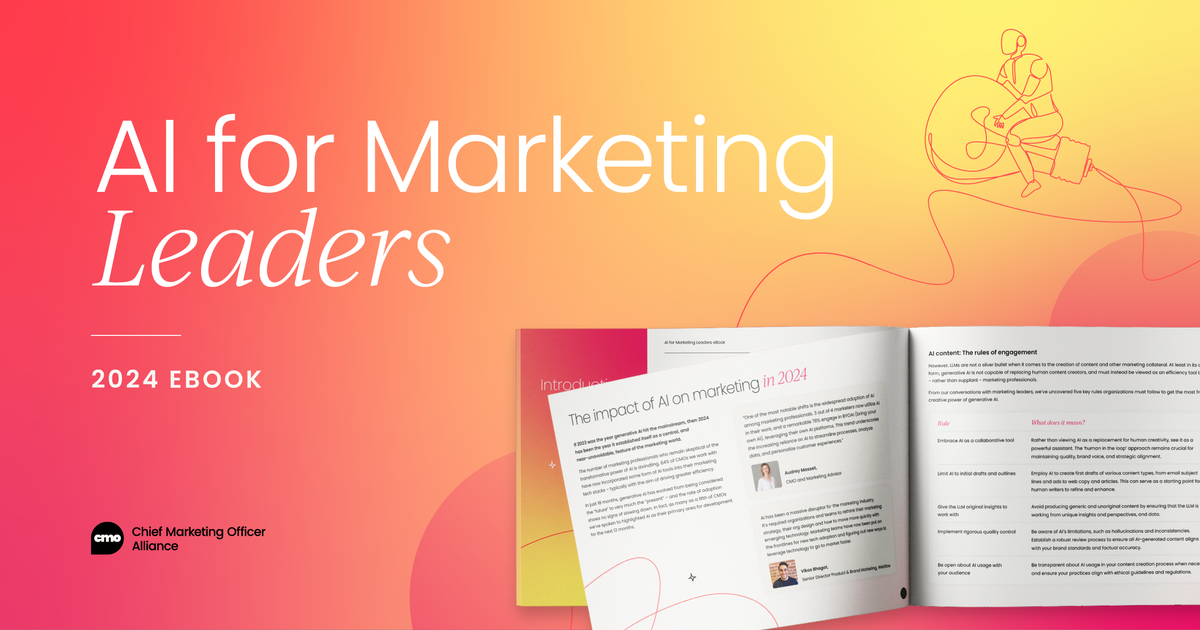
The future of marketing
There's a misconception that AI will enable generalists to do everything.
But I've found that AI's maximum impact is for specialists because they know what "good" looks like. AI should be used to augment a specialist, not replace them.
For example, a paid media specialist using AI can dramatically improve campaign performance. A generalist attempting to use AI for paid media lacks the foundational expertise to maximize the technology's potential. Academic research across multiple fields confirms that specialists see greater gains from AI than generalists.
This is a mindset shift we all need to embrace. If knowledge is no longer the key differentiator, then execution becomes everything.
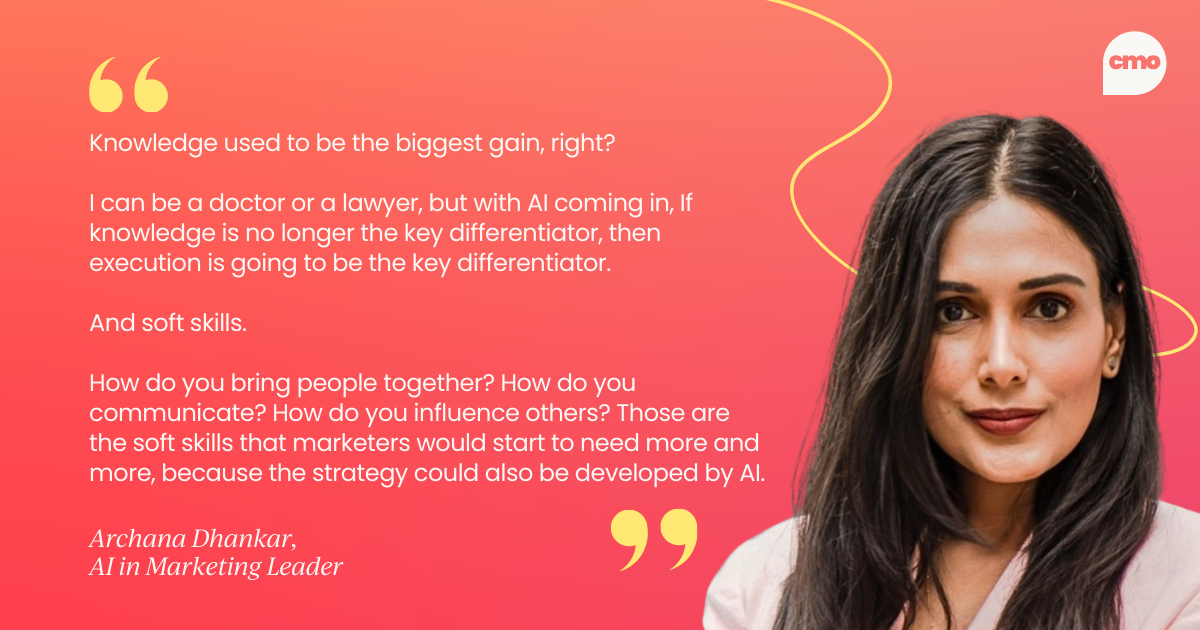
The proliferation of AI has paradoxically increased the importance of soft skills.
As AI handles more analytical and operational tasks, human abilities like communication, stakeholder alignment, and vision-casting become even more critical.
What are the skills for the AI era?
While a domain-specific background is still important, emotional intelligence (EQ) is critical. AI might just be supplementing our IQ, but our EQ becomes the most valuable asset.
Naturally, this shift demands new skills from marketers:
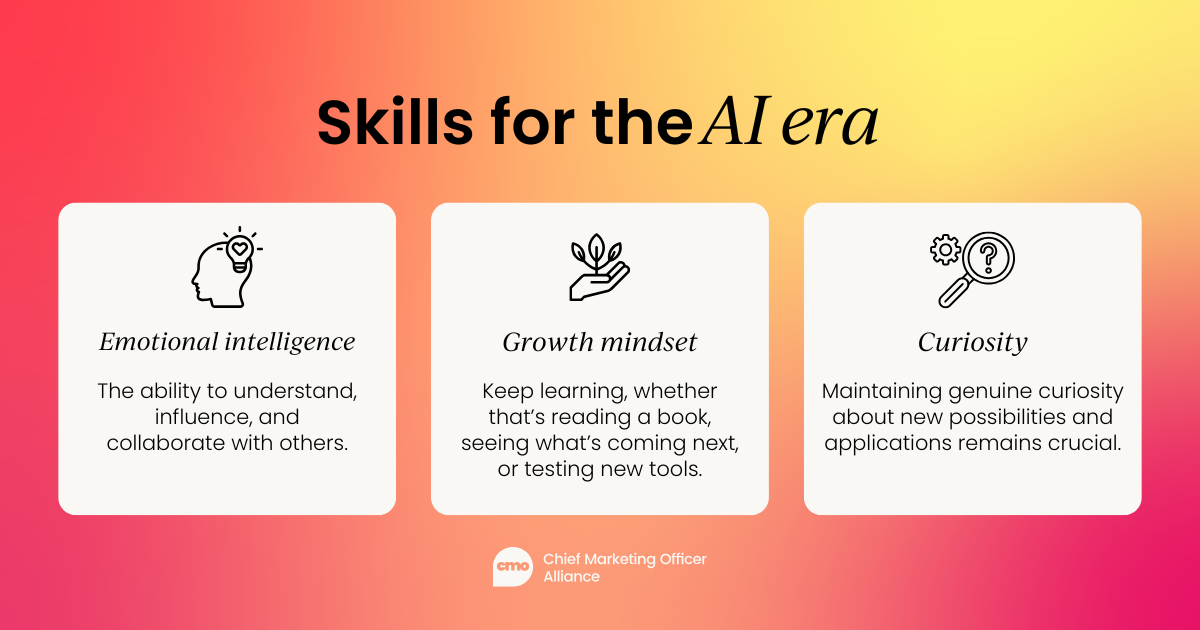
Emotional intelligence (EQ) becomes paramount. The ability to understand, influence, and collaborate with others grows more important as technical tasks become automated.
A growth mindset is essential. This pace of change requires continuous learning and adaptation. My personal approach involves constant learning, whether that’s reading books, exploring new tools, and testing emerging technologies, even when they fall outside my immediate responsibilities.
Curiosity drives innovation and keeps professionals relevant. Despite the overwhelming amount of information available, maintaining genuine curiosity about new possibilities and applications remains crucial.
Looking ahead, and some final thoughts
The AI landscape we’re currently living in will look dramatically different in two years. Staying relevant requires openness to new use cases, continuous learning, and a willingness to evolve alongside the technology.
Keep learning, keep growing, and maintain an experimental mindset. Be open to different AI applications and prepare for a future that may look very different from today's reality.
The organizations and individuals who thrive will be those who view AI not as a threat or a magic solution, but as a powerful tool for augmenting human capabilities and creating new possibilities.






.png)


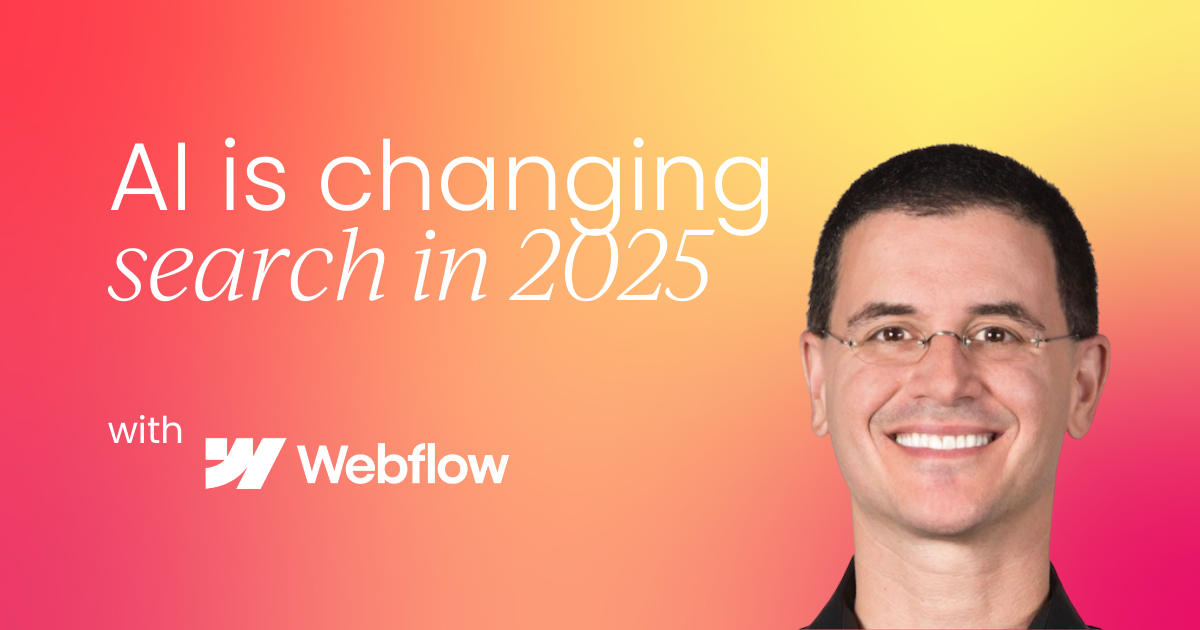






 Follow us on LinkedIn
Follow us on LinkedIn




